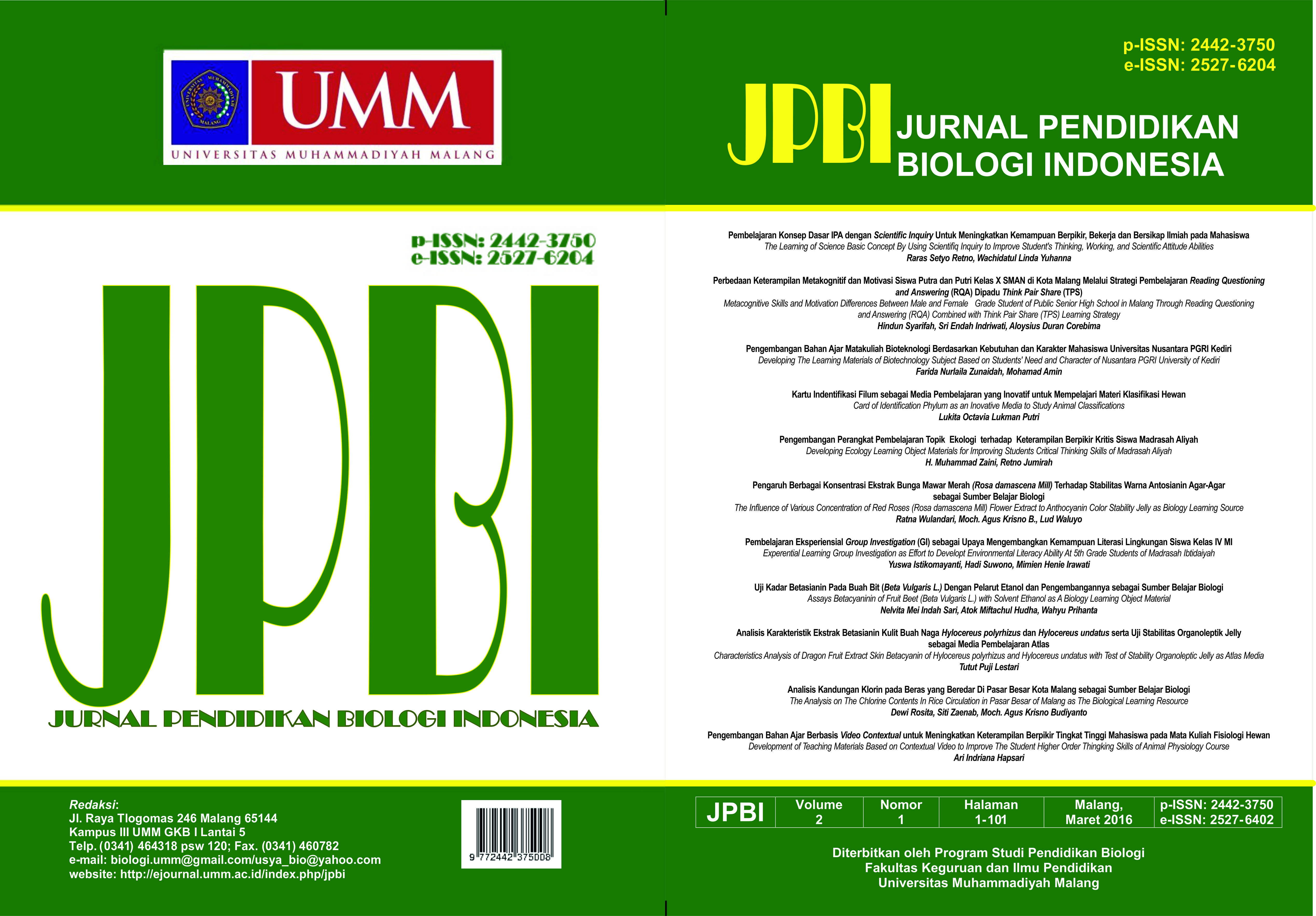THE LEARNING OF SCIENCE BASIC CONCEPT BY USING SCIENTIFIQ INQUIRY TO IMPROVE STUDENT’S THINKING, WORKING, AND SCIENTIFIC ATTITUDE ABILITIES
DOI:
https://doi.org/10.22219/jpbi.v2i1.2703Keywords:
High Order Thinking, Learning, Problem, Scientific AttitudeAbstract
This research was a classroom action research which was conducted intwo cycles, each cycle consists of planning, implementing, observing, and reflecting. The data used was quantitative data on student observation sheet instruments. The Results of the study which were obtained from the first cycle showed about the students’ thinking skills and scientific works. They were categorized as excellent 18.18%, good 22.73%, enough 52.27%, and sufficiently less 6.82%. As for the scientific attitude with a very active category of 11.36%, 43.18% and less active 45.45%. It has not reached indicators of success, so it was necessary to cycle II. Cycle II demonstrated the excellent category 38.63%, 36.36% good, good enough18.18% and less 6.81%. While the scientific attitude in the cycle II was an active attitude 29.54%, active 54.54%, inactive 15.91%. These results show an increase from the cycle I to cycle II. The conclusion of this study were: 1) learning the basic concepts of science with scientific inquiry in students can be conducible applied.2) Learning the basic concepts of science with scientific inquiry can improve thinking ability and scientific work and students’ scientific attitude. 3) Learning the basic concepts of science with scientific inquiry be able to explore and develop student creativity in designing simple experiments which can be applied in primary schools.Downloads
Downloads
Published
2016-07-22
Issue
Section
Instructional Model
License
Authors who publish with JPBI (Jurnal Pendidikan Biologi Indonesia) agree to the following terms:
- For all articles published in JPBI, copyright is retained by the authors. Authors give permission to the publisher to announce the work with conditions. When the manuscript is accepted for publication, the authors agree to automatic transfer of the publishing right to the publisher.
- Authors retain copyright and grant the journal right of first publication with the work simultaneously licensed under a Creative Commons Attribution-ShareAlike 4.0 International License that allows others to share the work with an acknowledgment of the work's authorship and initial publication in this journal.
- Authors are able to enter into separate, additional contractual arrangements for the non-exclusive distribution of the journal's published version of the work (e.g., post it to an institutional repository or publish it in a book), with an acknowledgment of its initial publication in this journal.
- Authors are permitted and encouraged to post their work online (e.g., in institutional repositories or on their website) prior to and during the submission process, as it can lead to productive exchanges, as well as earlier and greater citation of published work (See The Effect of Open Access).

This work is licensed under a Creative Commons Attribution-ShareAlike 4.0 International License.


















